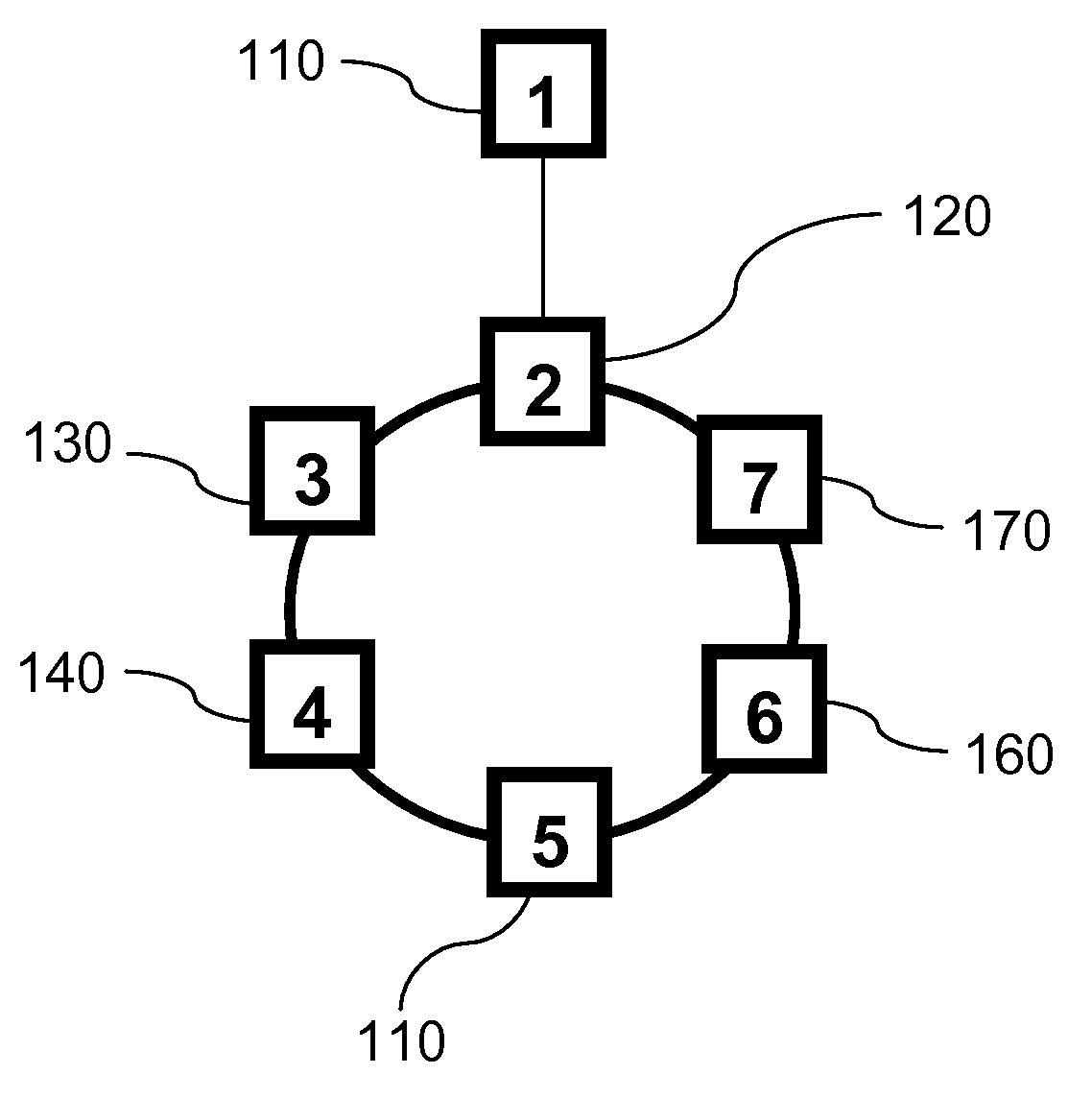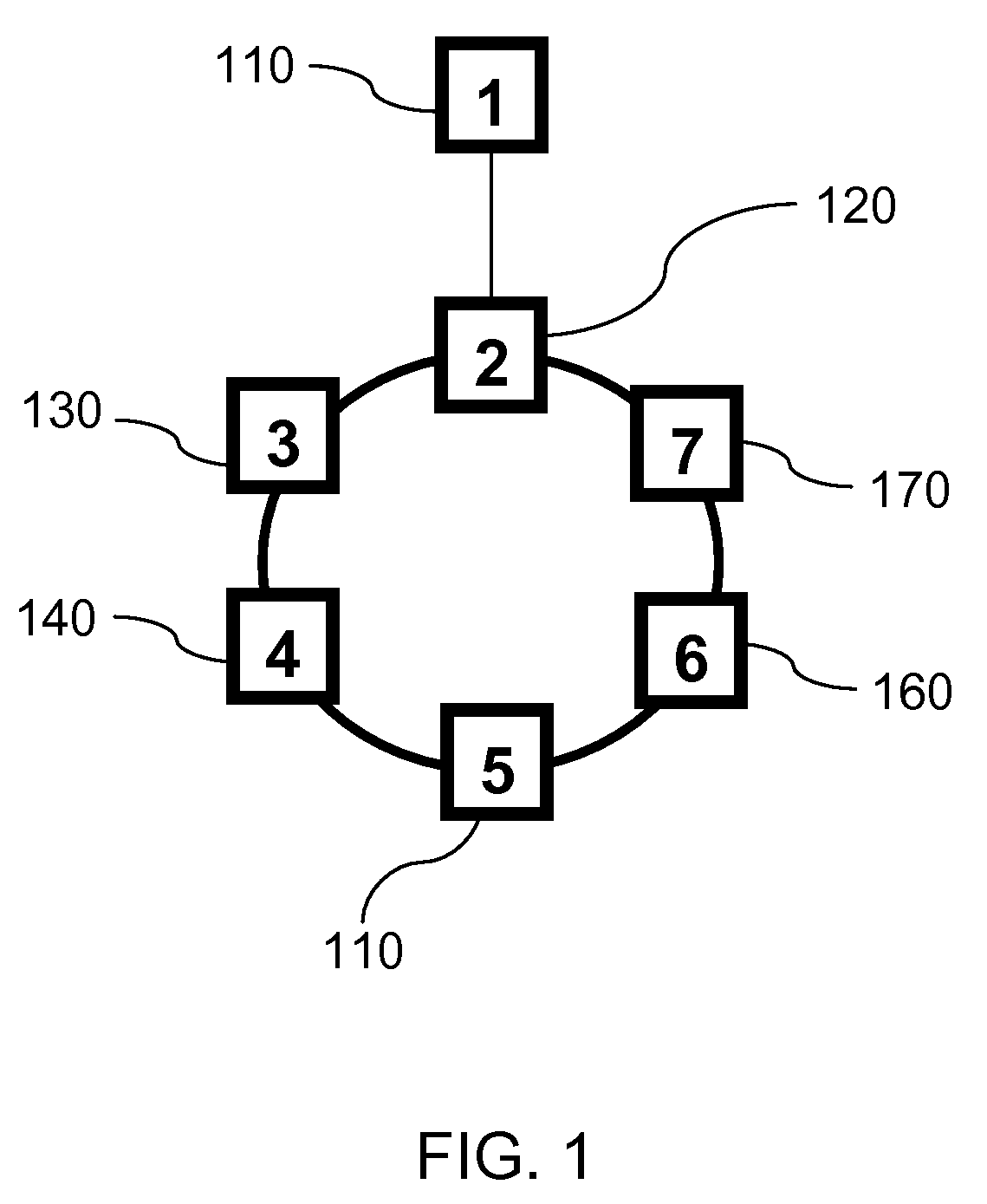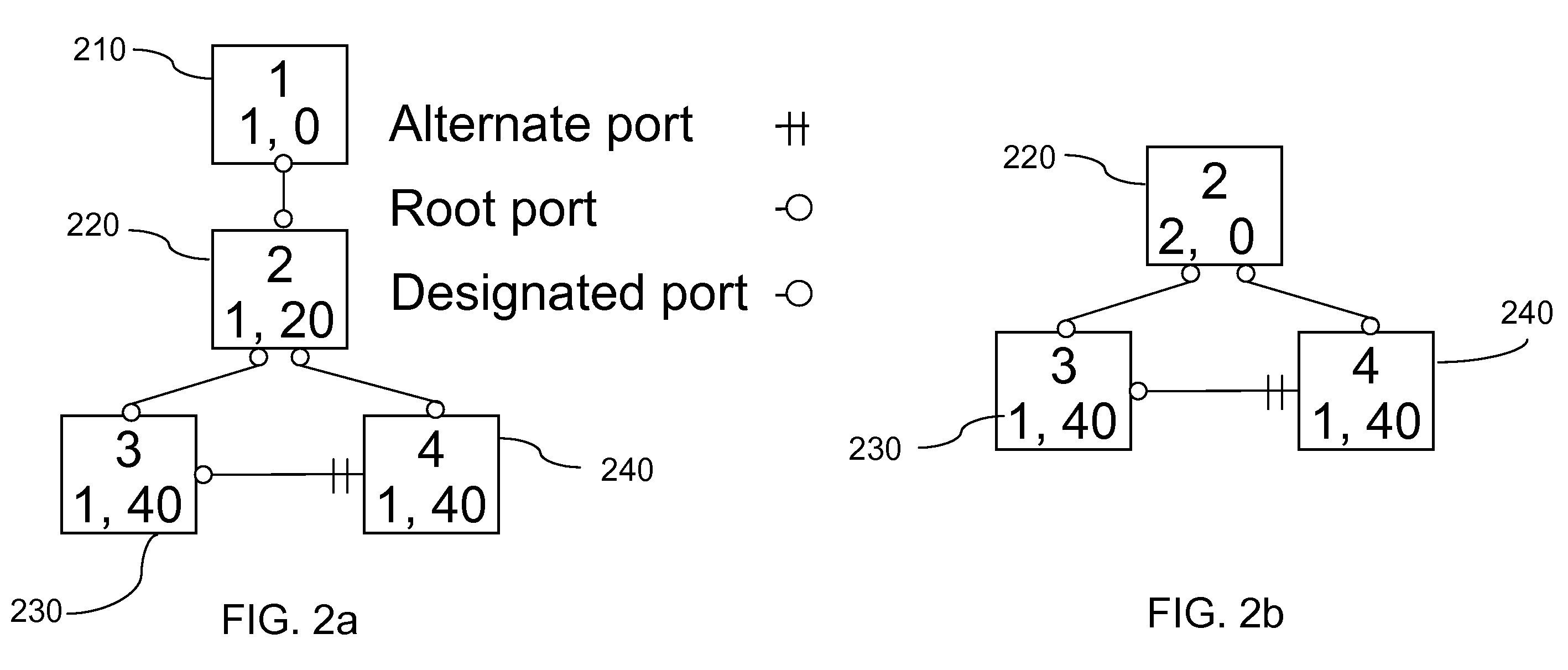System and method for preventing count-to-infinity problems in ethernet networks
- Summary
- Abstract
- Description
- Claims
- Application Information
AI Technical Summary
Benefits of technology
Problems solved by technology
Method used
Image
Examples
Embodiment Construction
[0085]The present invention, which may be referred to as RSTP with Epochs, solves the count to infinity problem discussed above. The RSTP with Epochs protocol of the present invention is an extension to the RSTP protocol that relies on the root adding a sequence number to each BPDU that it generates. Designated bridges generate and transmit their own BPDUs based on the latest root's BPDU and including the root's latest sequence number. The purpose of these sequence numbers is to identify stale BPDUs or stale cached information from a retired root. However sequence numbers by themselves are not sufficient. For example, consider in a network of bridges where there is the old root bridge A and a new bridge B with lower bridge ID than A that has just joined the network. Bridge B is now eligible to become the root, so when it receives a BPDU from A, it starts sending out its own using a sequence number higher than the one in A's BPDU. This is to override A's BPDUs and assert itself as th...
PUM
 Login to View More
Login to View More Abstract
Description
Claims
Application Information
 Login to View More
Login to View More - R&D
- Intellectual Property
- Life Sciences
- Materials
- Tech Scout
- Unparalleled Data Quality
- Higher Quality Content
- 60% Fewer Hallucinations
Browse by: Latest US Patents, China's latest patents, Technical Efficacy Thesaurus, Application Domain, Technology Topic, Popular Technical Reports.
© 2025 PatSnap. All rights reserved.Legal|Privacy policy|Modern Slavery Act Transparency Statement|Sitemap|About US| Contact US: help@patsnap.com



